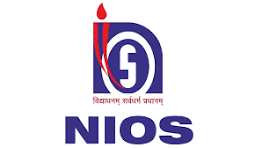WHAT IS DISTANCE EDUCATION
### Distance Education in India: Bridging the Gap in Learning Distance education has emerged as a transformative force in the Indian education landscape, offering flexible and accessible learning opportunities to millions. With its roots tracing back to correspondence courses in the early 20th century, distance education in India has evolved significantly, especially with the advent of digital technologies. #### Historical Perspective The concept of distance education in India began with correspondence courses offered by the University of Delhi in 1962. This mode of education was primarily aimed at those who could not pursue regular, full-time education due to various constraints, such as work commitments, geographical limitations, or financial barriers. Over the years, other universities followed suit, and by the late 20th century, distance education had become a viable alternative for many. #### Technological Advancements The technological revolution of the 21st century has profoundly impacted distance education in India. The proliferation of the internet, affordable smartphones, and digital platforms has made education more accessible than ever. E-learning platforms, online courses, and virtual classrooms have replaced traditional correspondence methods, providing a more interactive and engaging learning experience. Massive Open Online Courses (MOOCs) have also gained popularity, with platforms like SWAYAM, an initiative by the Indian government, offering a wide range of courses from various disciplines. These courses, often free or affordable, cater to the needs of diverse learners, from school students to working professionals seeking skill enhancement. #### Advantages of Distance Education 1. *Accessibility*: Distance education breaks down geographical barriers, allowing students from remote and rural areas to access quality education. This inclusivity is crucial in a country as vast and diverse as India. 2. *Flexibility*: Learners can study at their own pace and convenience, balancing education with work or other personal commitments. This flexibility is particularly beneficial for working professionals and homemakers. 3. *Cost-Effectiveness*: Distance education often proves more affordable than traditional education, with lower tuition fees and no additional costs for commuting or accommodation. 4. *Diverse Course Offerings*: From traditional degrees to vocational training and skill development courses, distance education offers a wide array of programs catering to varied interests and career aspirations. #### Challenges and Solutions Despite its numerous advantages, distance education in India faces several challenges: 1. *Quality Assurance*: Ensuring the quality and credibility of distance education programs is crucial. Regulatory bodies like the Distance Education Bureau (DEB) under the University Grants Commission (UGC) play a vital role in maintaining standards. 2. *Digital Divide*: Although technology has made education more accessible, the digital divide remains a significant hurdle. Many students in rural and economically weaker sections lack access to reliable internet and digital devices. Government initiatives like Digital India aim to bridge this gap, but more efforts are needed. 3. *Recognition and Employability*: Degrees obtained through distance education are sometimes perceived as inferior to those from traditional institutions. Efforts to enhance the reputation and acceptance of distance education credentials among employers and society are essential. 4. *Student Engagement*: Maintaining student engagement and motivation in a non-traditional learning environment can be challenging. Innovative teaching methods, interactive content, and regular assessments can help address this issue. #### The Future of Distance Education in India The COVID-19 pandemic has underscored the importance of distance education, accelerating its adoption across the country. The future of distance education in India looks promising, with several trends likely to shape its evolution: 1. *Blended Learning*: A combination of online and offline learning methods, known as blended learning, is gaining traction. This approach leverages the benefits of both modes, offering a more holistic learning experience. 2. *AI and Personalization*: Artificial Intelligence (AI) is set to revolutionize distance education by providing personalized learning experiences, adaptive assessments, and real-time feedback. 3. *Skill-Based Education*: With a growing emphasis on skill development and employability, distance education is increasingly focusing on vocational training and industry-relevant skills. 4. *Global Collaboration*: Partnerships with international institutions and online platforms can provide Indian students access to global educational resources and opportunities. ### Conclusion Distance education in India is a powerful tool for democratizing education, making it accessible to all, regardless of geographical, economic, or social barriers. With continued efforts to enhance quality, accessibility, and acceptance, distance education can play a pivotal role in shaping India's educational future and empowering millions to achieve their academic and professional goals.






